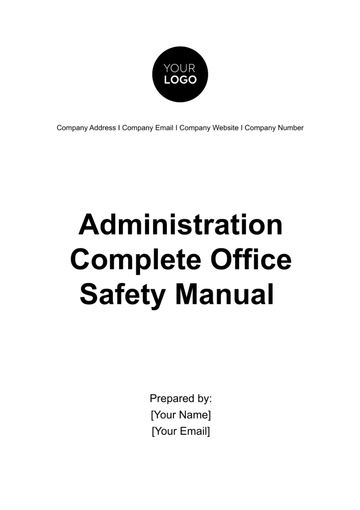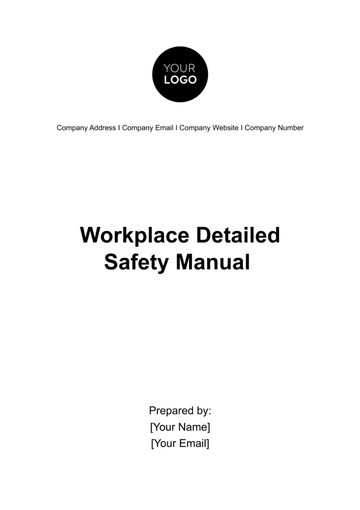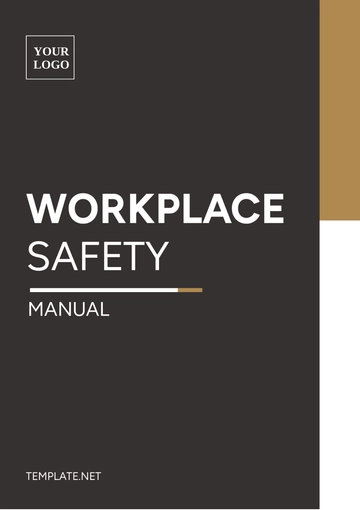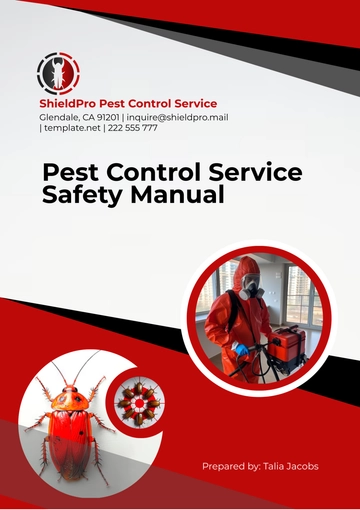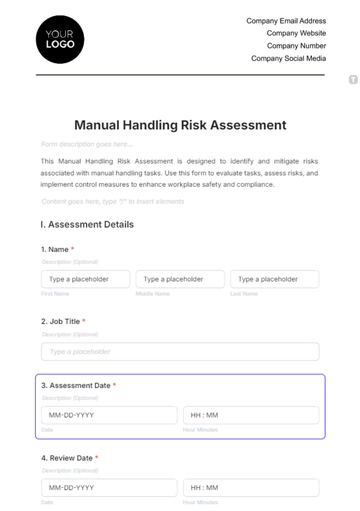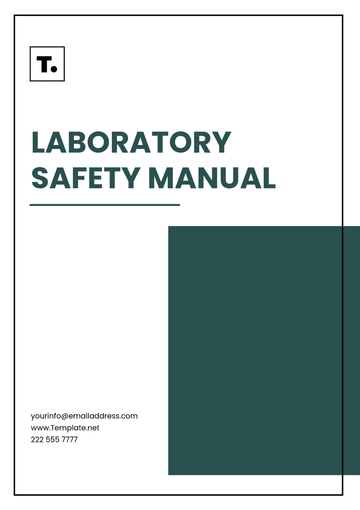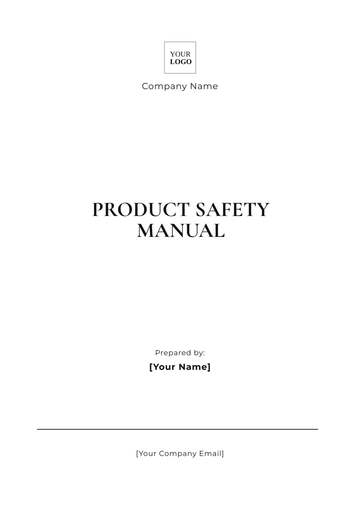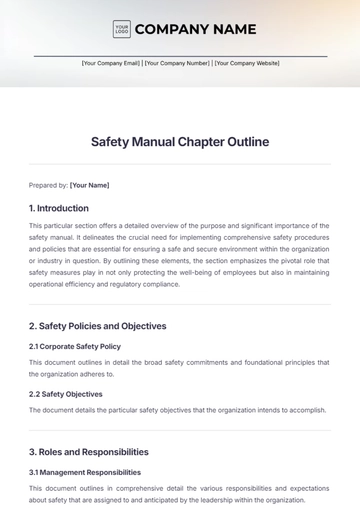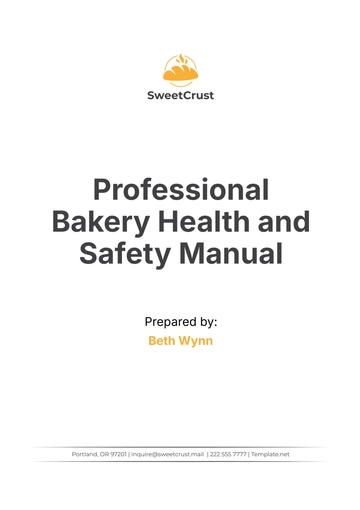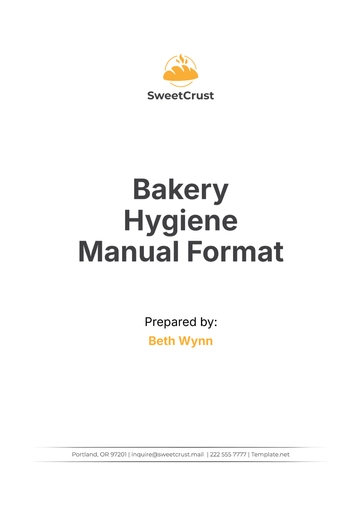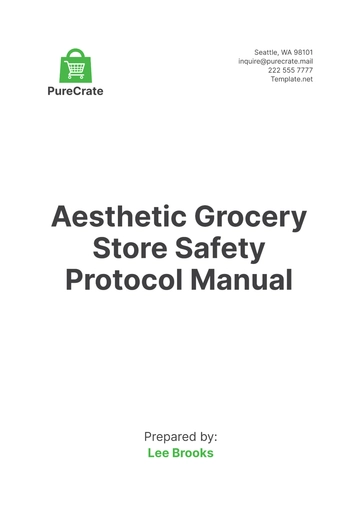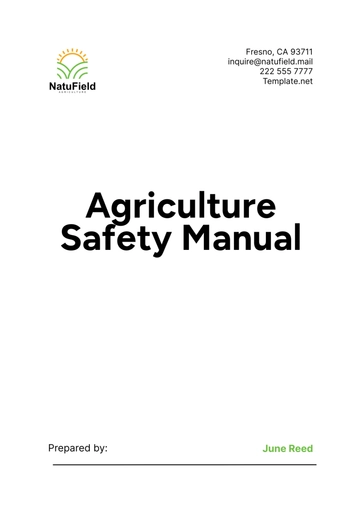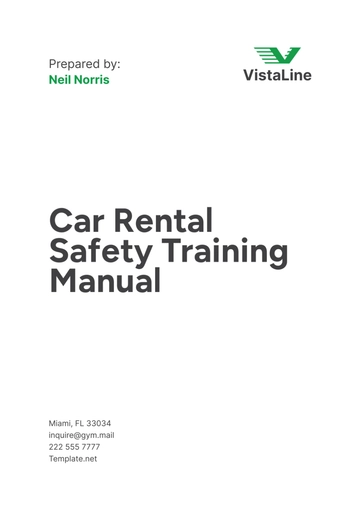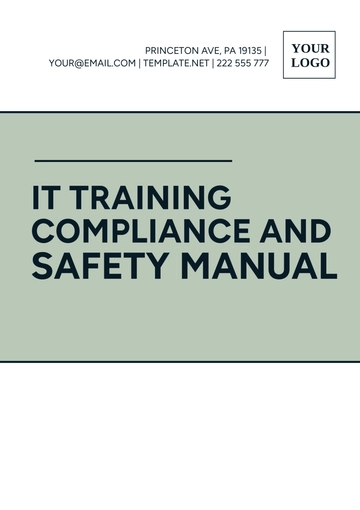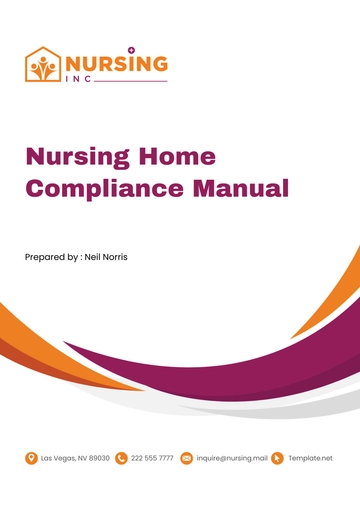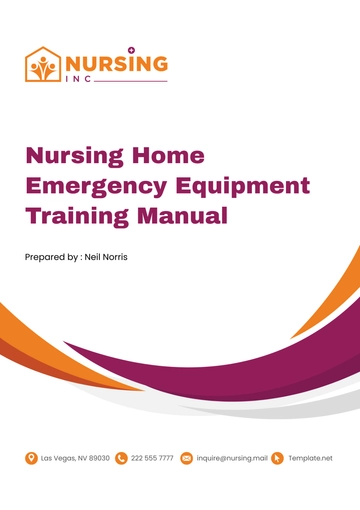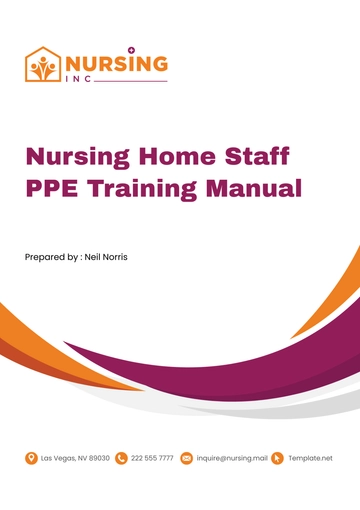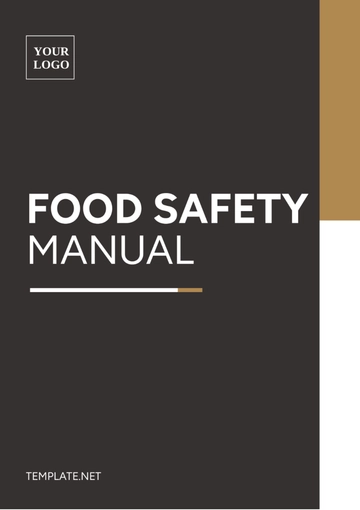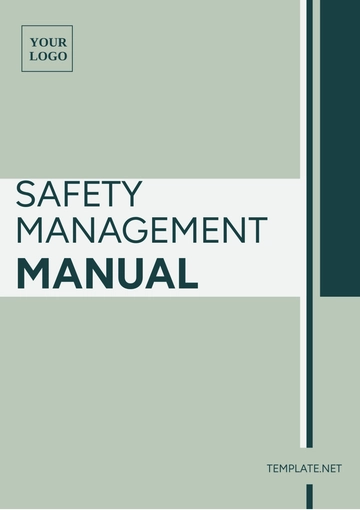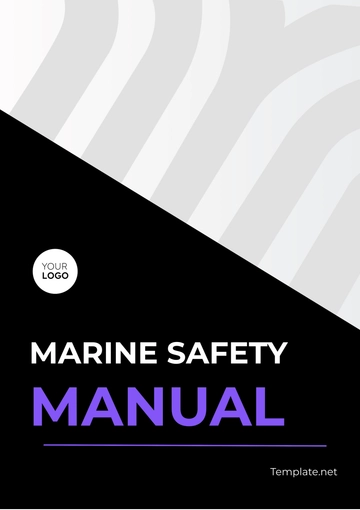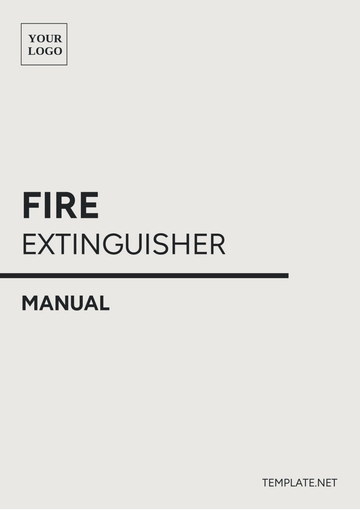Free Safety Risk Training Manual
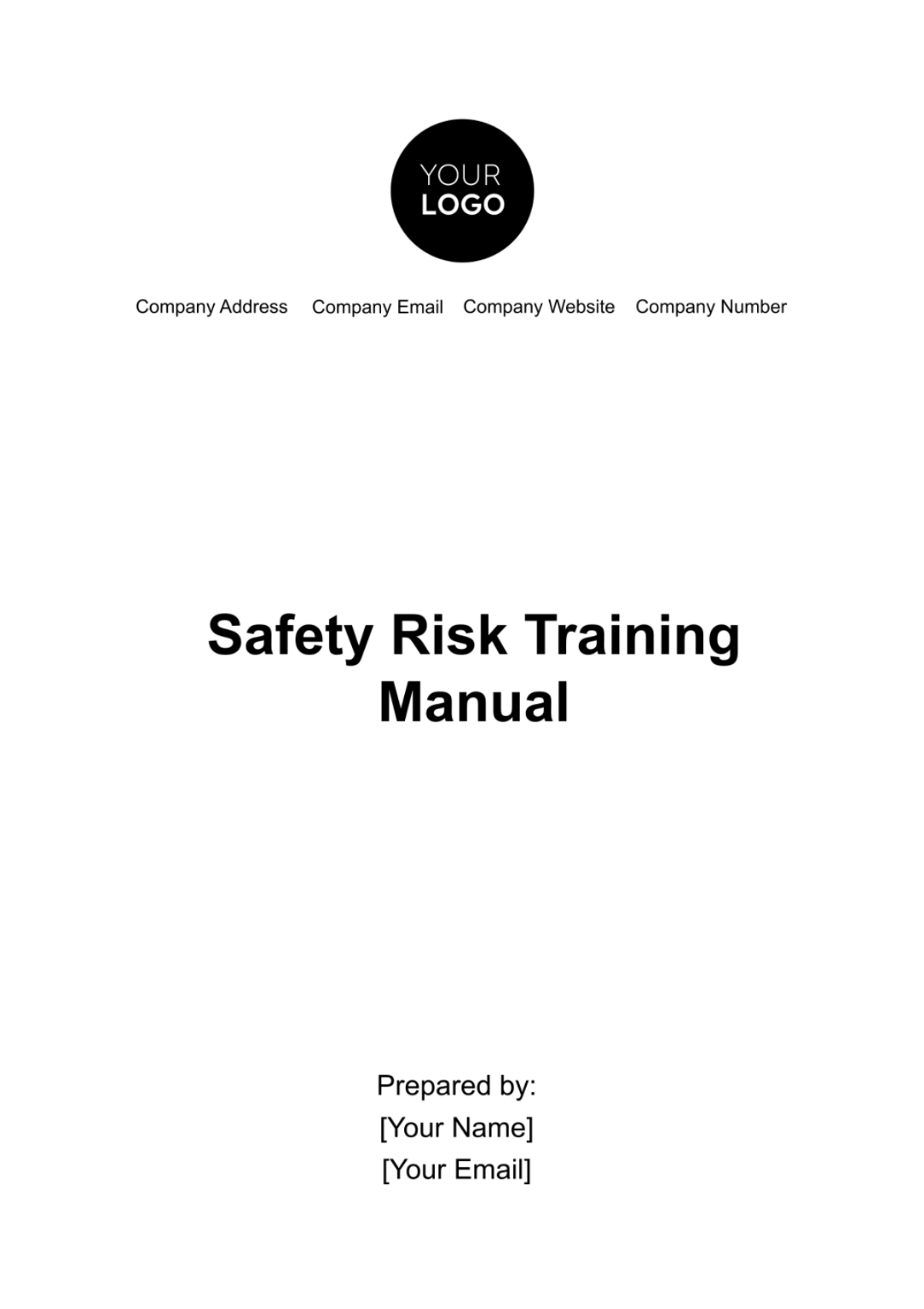
1. Introduction
At [Your Company Name], safety is not just a priority; it is a core value deeply ingrained in our corporate culture. We are pleased to present the Safety Risk Training Manual, a vital resource that underscores our unwavering commitment to the well-being of our employees and the creation of a safe, secure work environment.
This manual serves as a beacon, illuminating the path to a workplace where every individual can perform their duties with confidence, knowing that their safety is paramount. In our continuous pursuit of safety excellence, we recognize the importance of empowering our workforce with the knowledge and tools necessary to identify and mitigate risks effectively.
Our Health & Safety Policy, outlined comprehensively within these pages, encapsulates the essence of our commitment. It is a declaration of our pledge to uphold the highest standards of safety, adhering to legal requirements while proactively seeking opportunities for improvement.
As you navigate through the contents of this manual, you will find detailed insights into risk assessment, safety measures, incident reporting, and the shared responsibilities that collectively contribute to a secure work environment. We emphasize not only compliance but also the active engagement of our employees, for it is through this collective effort that we fortify our safety initiatives.
[Your Company Name] is dedicated to fostering a culture where safety is not just a practice but a way of life. We believe that safety is everyone's responsibility, and this manual serves as your guide in fulfilling that responsibility.
We invite you to explore the following sections, ensuring that you are well-prepared to contribute to our shared commitment to safety excellence.
[Your Company Name]
[Month Day Year]
2. Health & Safety Policy Overview
At [Your Company Name], safety is not merely a priority; it is the cornerstone of our operations. Our Health & Safety Policy encapsulates our steadfast commitment to fostering a work environment where the well-being of our employees takes precedence above all else.
Our Commitment to Safety
We recognize that our employees are our most valuable asset, and their safety is non-negotiable. Our Health & Safety Policy is a testament to our dedication to safeguarding every individual within our organization. It is not a mere document but a living commitment that guides our actions every day.
Key Emphases:
A. Employee Well-being
Our policy places the highest importance on the physical and mental well-being of our employees. We are dedicated to providing a safe and healthy work environment where everyone can thrive.
B. Compliance
We adhere rigorously to all relevant safety regulations and legal requirements. Compliance is not an option; it is our obligation to protect our workforce.
C. Continuous Improvement
Our commitment extends beyond compliance. We actively seek opportunities to enhance our safety measures, believing that there is always room for improvement.
D. Open Communication
We encourage open and honest communication regarding safety concerns. Every employee has the right and responsibility to report hazards or incidents without fear of reprisal.
E. Accountability
Safety is a shared responsibility. Both management and employees are accountable for upholding our safety standards and ensuring a secure work environment.
This Health & Safety Policy underscores our promise to maintain safety as an integral part of our corporate culture. As you proceed through this manual, you will gain a deeper understanding of the practical steps we take to implement this policy and uphold our commitment to safety excellence.
3. Risk Assessment
Risk assessment is a critical component of workplace safety management. It involves a systematic process to identify, analyze, and evaluate risks associated with hazards in the workplace. This chapter outlines the structured approach to risk assessment at [Your Company Name], encompassing hazard identification, risk analysis, and risk evaluation. Our objective is to provide a clear and practical framework to manage and mitigate risks effectively, ensuring the safety and well-being of all employees.
Section | Aspect | Description | Examples / Tools / Methods |
Hazard Identification | Definition | Explains potential sources of harm in the workplace, including physical, chemical, biological, ergonomic, and psychosocial hazards. | Physical: Slips, trips, falls Chemical: Exposure to harmful substances Biological: Infectious agents Ergonomic: Poor workstation design Psychosocial: Workplace stress |
Identification Methods | Describes processes and tools used for identifying hazards. | Workplace Inspections Incident Reports Employee Feedback Health and Safety Committee Reviews | |
Examples | Provides examples of common hazards specific to the industry. | Industry-specific examples (e.g., machinery operation risks in manufacturing, chemical handling in laboratories) | |
Risk Analysis | Process | Outlines the methodology for evaluating risks associated with identified hazards, including likelihood and severity. | Assessing each hazard for potential impact and probability of occurrence. |
Tools and Techniques | Details specific risk analysis tools or software used. | Risk Matrix What-If Analysis Specialized Software Tools | |
Documentation | Emphasizes the importance of documenting findings and methodologies. | Detailed records of risk analysis process and outcomes. | |
Risk Evaluation | Prioritization | Discusses how risks are prioritized based on analysis, focusing on those posing the greatest threat. | Prioritizing risks based on severity and likelihood of occurrence. |
Risk Control Measures | Introduces the concept of risk control measures. | Elimination or Substitution Engineering Controls Administrative Controls Personal Protective Equipment | |
Review and Update | Stresses the need for regular review and updates as part of continuous improvement. | Scheduled reviews and updates to risk evaluation process and outcomes. |
4. Safety Measures
In this chapter, we focus on the critical aspect of Safety Measures within [Your Company Name]. Safety measures are essential to prevent accidents and injuries in the workplace, ensuring a secure environment for all employees. The purpose of this chapter is to ensure that each employee at [Your Company Name] is well-versed in these safety measures, equipped to handle emergencies, and protected in their daily activities. By adhering to these guidelines, we reinforce our commitment to a safe and healthy work environment.
Section | Aspect | Description | Details / Methods |
Emergency Procedures | Evacuation Plans | Detailed procedures for various emergencies like fire, chemical spills, natural disasters. | Specific evacuation routes, assembly points, and procedures tailored to different emergency scenarios. |
Contact Information | List of emergency contact numbers and roles of safety personnel. | Contacts for internal safety officers, emergency response teams, and external emergency services. | |
Training | Frequency and type of emergency response training for employees. | Regular drills, specific scenario training, and emergency response courses. | |
Personal Protective Equipment (PPE) | PPE Requirements | Types of PPE required for different jobs or areas. | Specification of helmets, goggles, gloves, etc., based on job or area risks. |
Maintenance and Care | Guidelines for PPE maintenance, storage, and disposal. | Instructions on cleaning, inspecting, storing, and disposing of PPE. | |
Training | Training provided on the correct use of PPE. | Training sessions on proper PPE usage, limitations, and care. | |
Training and Education | Orientation Programs | Safety training for new employees. | Introduction to workplace safety rules, emergency procedures, and PPE usage. |
Ongoing Training | Description of continuous training programs. | Schedule and content for regular safety training updates and refreshers. | |
Specialized Training | Specialized training for high-risk activities or specific roles. | Tailored training programs for roles or activities with unique safety requirements. |
5. Safety Responsibilities
The "Safety Responsibilities" chapter underscores the pivotal roles and duties of both management and employees in maintaining a safe work environment at [Your Company Name]. This chapter delineates the specific responsibilities that each group holds, emphasizing the collaborative nature of workplace safety. Management is tasked with providing leadership, implementing policies, and monitoring safety performance. Employees, on the other hand, are responsible for adhering to safety rules, reporting concerns, and actively participating in safety initiatives. Together, these responsibilities form the backbone of our safety culture.
Section | Responsibility | Description | Actions / Methods |
Management | Leadership and Commitment | Role of management in setting a safety precedent and resource allocation. | Leading by example, ensuring the availability of safety resources and support. |
Policy Implementation | Implementing and enforcing safety policies and procedures. | Developing, communicating, and enforcing safety policies across the organization. | |
Monitoring and Review | Overseeing safety performance and effectiveness of policies. | Regularly reviewing and updating safety policies, and conducting safety audits. | |
Employees | Compliance | Adhering to established safety rules and procedures. | Following all safety guidelines, protocols, and training instructions. |
Reporting | Reporting any hazards, incidents, or near-misses. | Encouraging open communication and reporting of safety concerns without fear of reprisal. | |
Participation | Active involvement in safety committees and discussions. | Contributing to safety meetings, providing feedback, and participating in safety training sessions. |
This chapter affirms that safety is a shared responsibility, requiring the commitment and active participation of everyone in the organization. By understanding and fulfilling their respective roles, management and employees collectively contribute to a safer and more secure work environment at [Your Company Name].
6. Safety Compliance
Safety Compliance is a crucial chapter that details how [Your Company Name] adheres to and upholds health and safety standards. Compliance with legal requirements is not just a legal obligation but a moral one, ensuring the safety and well-being of our employees. This chapter is divided into two main sections: the first focuses on the legal requirements, including relevant regulations and our strategies for compliance and record-keeping. The second section delves into the processes surrounding audits and inspections, both internal and external, and the corrective actions taken to address any identified issues. This chapter underscores our commitment to maintaining a high standard of safety compliance in all aspects of our operations.
Section | Aspect | Description | Details / Methods |
Legal Requirements | Regulations | Key health and safety regulations applicable to the workplace. | Listing specific industry and regional safety regulations and standards. |
Compliance Strategies | How the company ensures adherence to these regulations. | Implementing procedures that align with legal requirements, and employee training on compliance. | |
Record Keeping | Keeping records to demonstrate compliance. | Maintaining training logs, incident reports, and compliance documentation. | |
Audits and Inspections | Internal Audits | Frequency and methodology of internal safety audits. | Regularly scheduled audits, use of checklists, and reporting tools to assess compliance. |
External Inspections | Regular inspections or audits by external regulatory bodies. | Preparing for and cooperating with external audits, and maintaining readiness for inspections. | |
Corrective Actions | Addressing non-compliance issues identified during audits. | c |
This chapter aims to provide a clear framework for understanding and executing safety compliance measures, reflecting [Your Company Name]'s dedication to upholding the highest standards of workplace safety. Through diligent adherence to these practices, we strive to create a safe and compliant work environment for all our employees.
7. Conclusion
Embracing Safety as a Collective Responsibility
As we conclude this Safety Risk Training Manual, it is important to reiterate [Your Company Name]'s unwavering commitment to creating and maintaining a safe and healthy work environment. The policies, procedures, and practices outlined in this manual are a testament to our dedication to safety, which we regard as an integral and non-negotiable aspect of our work culture.
We call upon every employee to embrace these guidelines not just as a set of rules but as a personal commitment to collective well-being. Your active participation in upholding these safety standards is crucial. We encourage you to use this manual as a dynamic tool - a guide for daily operations and a reference in uncertain situations.
Together, through our shared commitment and continuous effort, we can ensure that safety remains at the forefront of all our endeavors, protecting ourselves, our colleagues, and the long-term success of [Your Company Name]. Let us move forward with a renewed sense of responsibility and dedication to a safe and secure workplace.
8. Contact Information
Safety Department
For any queries, concerns, or further information regarding workplace safety, please feel free to reach out to our dedicated Safety Department. Our team is here to assist you with any safety-related issues, provide clarifications on safety procedures, or receive feedback and suggestions for improving our safety practices.
Contact Details:
Safety Department Lead: [Name of Safety Department Lead]
Email: [safetydeptlead@yourcompanyname.com]
Phone: [Direct Line Number]
Office Location: [Building/Office Number, Your Company Name]
General Safety Department:
Email: [safetydepartment@yourcompanyname.com]
Phone: [General Contact Number]
Office Hours: [e.g., 9 AM - 5 PM, Monday to Friday]
Emergency Contact: [Emergency Contact Number]
For immediate assistance or to report an emergency.
Additional Resources:
Safety Reporting Portal: [Link to Online Reporting Portal]
Safety Resource Library: [Link to Online Resources or Location of Physical Library]
We encourage all employees to keep these contact details handy and not hesitate to reach out to the Safety Department for any safety-related support or inquiries. Your safety is our priority, and we are committed to providing a responsive and supportive environment for all our employees at [Your Company Name].
- 100% Customizable, free editor
- Access 1 Million+ Templates, photo’s & graphics
- Download or share as a template
- Click and replace photos, graphics, text, backgrounds
- Resize, crop, AI write & more
- Access advanced editor
Transform your safety training efforts with Template.net's Editable Safety Risk Training Manual Template. With its user-friendly editing features, this template simplifies the customization of safety procedures, risk assessments, and training modules. Ensure your team's safety with this professionally designed resource, saving you time and effort in crafting a crucial document. Get started today and elevate your safety training initiatives!

